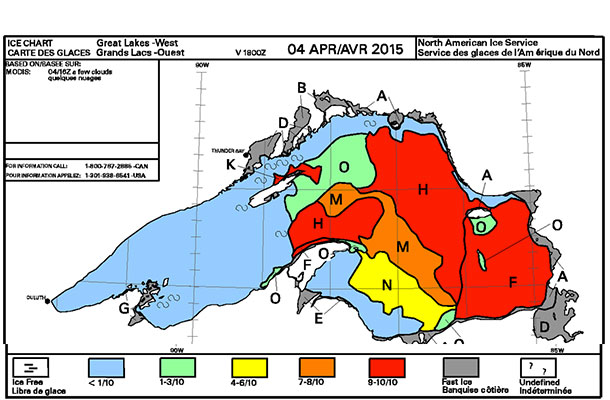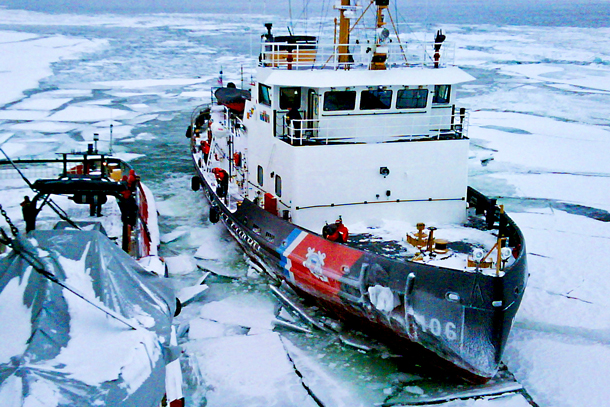
THUNDER BAY – The shipping season for the Great Lakes and Port of Thunder Bay are looking positive, once the ice is gone.
The bumper wheat crop from last year on the Canadian prairies has to get to market. That should help make for a good season in Thunder Bay.
Ice on Lake Superior is slowly melting.
Ice Breaking on the Great Lakes
The Coast Guard cutter fleet is flushing ice through the Great Lakes river systems to prevent ice jams and facilitate commercial shipping as the shipping season begins and the ice on the Great Lakes dissipates.
Ice breaking operations, above freezing-temperatures, and rain has caused plate ice to weaken, creating large and small ice floes through the Great Lakes and its river systems.
These ice floes, if not managed and flushed, can create thick brash ice that can clog the mouths and connection points of the rivers, which can cause significant flooding and block shipping channels.
The Soo Locks along the St. Marys River opened Wednesday, and the Welland Canal, which connects Lake Erie to Lake Ontario, as well as the St. Lawrence Seaway, is expected to open in the coming weeks, opening up the Great Lakes to more shipping traffic.
All the action throughout the Great Lakes and the weather transition from winter to spring is causing hazardous ice conditions for ice enthusiasts, so the Coast Guard is encouraging these people to take extreme caution if transiting the ice.
The Coast Guard and local agencies are reminding people who venture out onto melting and weakening ice that they are not only putting their own lives in danger, but the lives of first responders.
Ice is unpredictable and the thickness can vary, even in small areas. Water currents, particularly around narrow spots, bridges, inlets and outlets, are always suspect for thin ice. Stay away from cracks, seams, pressure ridges, slushy areas and darker areas since these signify thinner ice.
Obstructions such as rocks, logs, vegetation and pilings affect the strength of ice. Shifting and expanding ice can create pressure cracks and ridges around the obstructions.
In addition, ice near the shore of a frozen lake may be unsafe and weaker because of shifting, expansion, and sunlight reflecting off the bottom.
People walking their dogs should always keep them on a leash to prevent the pet from running out onto the ice or falling or jumping into the water.







